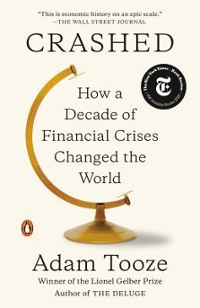Long explanation in all parts
5. (30 points) A consumer has the utility function over goods z and y, u(I, y) = x/2 + yl/2. Let the price of good r be given by pr, let the price of good y be given by Py, and let income be given by M. (a) Derive the consumer's generalized demand function for good y. (b) Is good y normal or inferior? (c) If we have p, = 2, py = 1, and M = 12, compute the utility marimizing consumption bundle of goods a and y.Question 2 - Consider two products, A & B. The demand for goods A & B is a function of the price of both good A & B, and described by the following two quantity- demanded equations: 200 1000 9A = 1/2 98 = 1/3 PAPB PA PB Now, find OqA/OqB & OqB/ OqA. Given your result, explain why A & B are either compliments, substitutes (competitive goods) or neither. (given terms describing quantity demanded, find their cross partials (their cross-price elasticities) and determined and explain what type of goods they are)Use the (2 factor, 2 goods, 2 countries) Heckscher-Ohlin model and (i) Formulate the Stolper- Samuelson theorem. (ii) Discuss why it is useful for analyzing the effects of trade liberalization. (iii) Use the Lerner diagram and sketch the proof of this theorem.Question 3: Use in the standard trade model with two goods, cloth and food: (i) Describe the production possibility frontier (PPF) assumed in that model and explain why this model implies that the opportunity costs of a good increase if the production of that good increases. What assumptions are behind this conclusion? (ii) Illustrate the autarky and the free trade equilibrium for a country that has a comparative advantage in the production of cloth. State the conditions that characterize the competitive equilibrium (both for the autarky and the free trade equilibrium) and give an interpretation of these conditions. (iii) Why does this country gain from trade?Illustrate the market equilibrium in a Cournot-setting with two firms that produce a homogenous good under a linear demand function that does not depend on income. (Thereby, assume marginal costs are constant and the same for all firms.) (2x) (i) In particular, describe the profit maximizing conditions for a firm and define its reaction function. A country with a monopoly - sector does not produce at the social optimum. (ii) Illustrate the impact on prices, quantities and welfare when a foreign firm enters and the monopoly is changed to a duopoly (assume Cournot competition). (iii) Explain why there are pro-competitive gains from trade.Assume a two goods economy. Furthermore, assume that there is a monopoly for one good, say salt, but all other markets including that for labour and capital are competitive. (2x) (i) Illustrate the price setting behaviour of the monopolist under autarky and explain its mark- up pricing behaviour. Give also a formal illustration. (ii) Use the production possibility frontier and illustrate why this economy is not producing at the social optimum. Illustrate the equilibrium conditions (also formally) and the distortion induced by the monopoly.Give a short review of the empirical evidence on the Heckscher-Ohlin Model. (i) Define (in words) the factor content of trade. Discuss the Leontief Paradoxon and the related evidence. (ii) Discuss the phenomenon of missing trade as put forward by Trefler. (iii) Which type of trade flows is best described by the Heckscher-Ohlin Model and why?February 2014 "The oldest explanation of trade between countries by David Ricardo is based on specialization in production based on differences in labour productivity." (i) Describe the concept of labour intensity and labour productivity as defined in the Ricardo model. Discuss shortly the assumptions about the labour intensities in this model and derive the marginal cost of a typical firm in the Ricardo model. (ii) Define the production possibility frontier (PPF) of a country. Which factors determine the PPF and why? (iii) Use the two-country, two-sector, one-factor Ricardo model and explain the concept of opportunity costs and comparative advantage. Give also a formal derivation of the opportunity costs of a product based on the PPF and provide a short interpretation of your result. =>ANTWORTEN VON JULI 2014 KLAUSUR (iv) Explain why in this model a firm in a country can be competitive on the world market if this country exhibits lower labour productivity than its trading partner in all two sectors."














